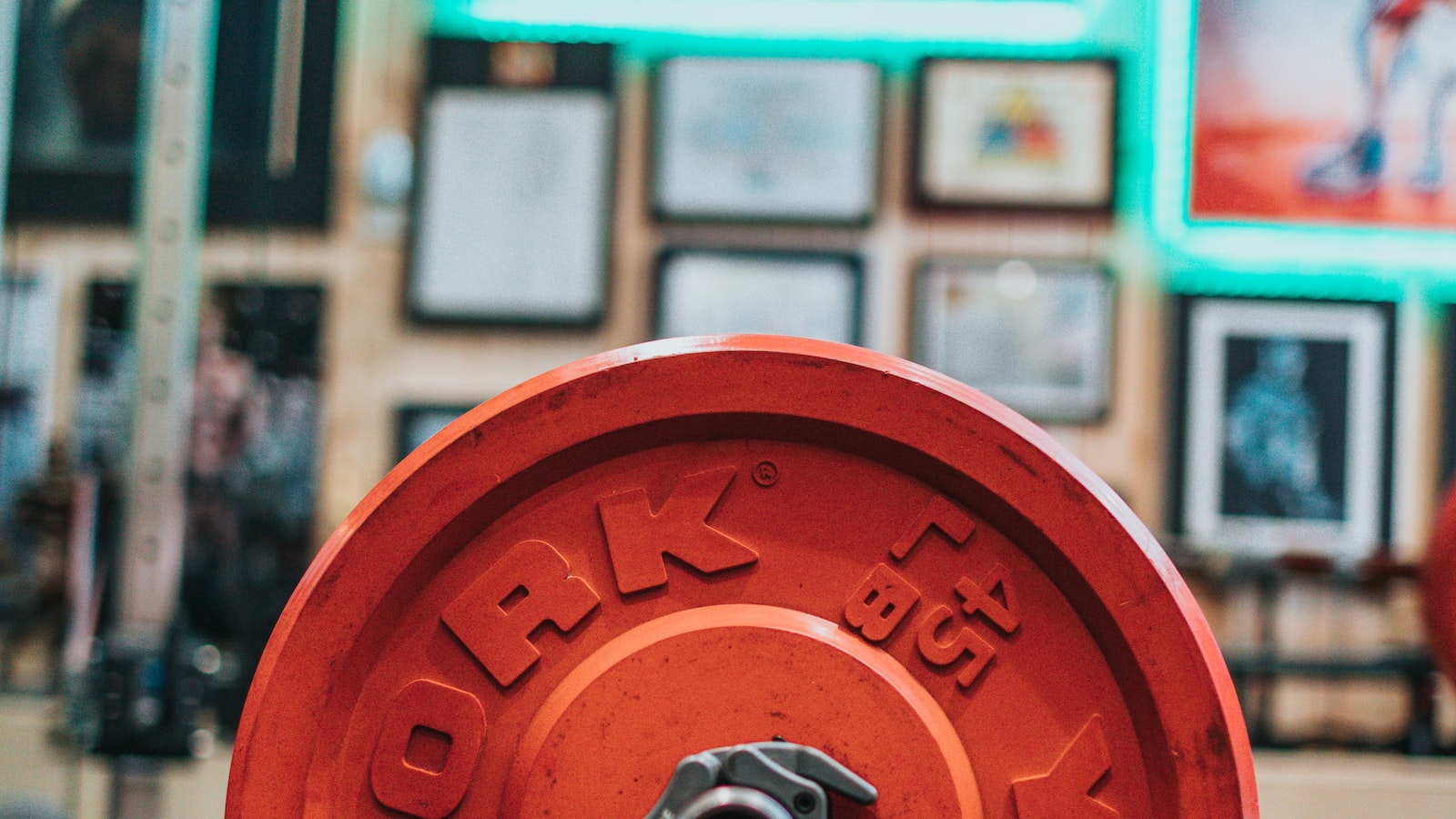
Walk Your Way to Fitness: The Benefits of Walking
Walking can be an easy and effective way to stay fit and healthy, without having to try too hard. Whether you’re a full-time fitness fanatic or someone who’s looking for a simple way to take care of themselves, it’s important to recognize the benefits of walking to stay in shape. In this article, we’ll examine the advantages of taking a regular walk and how to make it part of your lifestyle. Read on to find out more about how walking can help you achieve good fitness and overall wellbeing.
List of Content
- 1. What You Need to Know About Walking for Fitness
- 2. How Walking Increases Your Health and Well-being
- 3. The Benefits of Regular Walking
- 4. Starting Out: Recommended Steps for Beginning Walkers
- 5. Ways to Spice Up Your Walking Routine
- 6. Making Walking Part of Your Routine for Lasting Fitness
- My Awnswers to your Questions
1. What You Need to Know About Walking for Fitness
Walking for fitness can be an excellent way to build endurance, burn calories, relieve stress, and improve your mood. Here are some key points to keep in mind:
- Intensity: Brisk walking is best; it’s a moderate-intensity exercise. Try to pick up the pace to a point where you can still talk but not sing―this is the “talk test” that lets you know the pace is just right.
- Time and Frequency: A good goal is to walk for at least 30 minutes a day. You don’t have to do it all in one go―you can break it up into 10-minute bouts throughout the day.
- Form: It’s important to mind your posture and stride so that your walk is as efficient and comfortable as possible. Try to keep your head up, shoulders relaxed, and bring your arms up and down in a rhythmic way; your stride should be long and rhythmic (not short and choppy).
Walking on an incline and adding short bursts of jogging can help make your walking workout even better. Also, don’t forget a good warm-up and cool-down―at the beginning and end of your walk, add in some light stretching. Finally, keep in mind that it’s important to listen to your body and adjust your pace up or down depending on how you’re feeling.
Consistency is key. Start small and gradually increase the length and intensity of your walks over time. With the right approach, walking for fitness can be an excellent way to get your body in shape and feel better all around.

2. How Walking Increases Your Health and Well-being
One of the most underrated exercises around is the simple act of walking. How can such a basic form of movement make such a difference in your health and well-being? Let’s dive in deeper into the benefits of walking.
Helps to Lower Stress Levels – When stress levels rise, it can negatively affect your thoughts and motives in life. Walking helps to reduce cortisol levels in the body which is known to be the primary stress hormone. Taking a walk helps generate a sense of calmness and relaxation.
Improves Mental Clarity – When in a state of mental fuzziness, it often becomes difficult to focus on tasks. Going for a walk, especially in an area with natural beauty, helps to clear the mind and gain a renewed sense of clarity.
Get a Boost of Energy – When feeling sluggish or having a bout of fatigue, walking helps to jump-start the body and energy levels. Studies have also suggested that walking enhances the effects of the caffeinated beverages. Some of the energy boosting benefits include:
- Regulated blood flow throughout the body
- Release of endorphins which improves mood
- A rise in oxygen to the cells and tissues of the body
Boosts Immune System – Not only does walking increase the energy levels of a person, but it is also beneficial for the overall health of the body. Walking has a positive influence on the immune system in which it strengthens the white blood cells.
3. The Benefits of Regular Walking
Walking is something so simple, yet it offers us so many physical and mental health benefits – making it an enjoyable way to incorporate daily exercise into our lives.
1. Improved Heart Health
The most obvious physical benefit of walking is that it is excellent for cardiovascular fitness. It helps to keep your heart healthy and strengthen the immune system, preventing you from getting ill so easily. It increases your heart rate and circulation, lowers blood pressure, improves the flow of oxygen and even helps to reduce cholesterol. All of these are essential to help you avoid developing any serious cardiovascular diseases.
2. A Healthy Metabolism
When we walk, the amount of oxygen in our cells is increased. This allows our bodies to metabolize the food we consume more efficiently. This helps maintain a healthy calorie balance, and regular walking can help you lose a few extra kilos. Combined with a healthy diet it can also help manage diabetes and any other metabolism related diseases.
3. Improved Mental Well-being
Walking is a great form of exercise for your mind as well as your body. It is proven to reduce depression and anxiety, while also improving your mental clarity and focus. It helps keep our brains alert and active, allowing us to think more clearly and giving us the mental energy to tackle tasks with ease.
4. Better Sleep
Walking helps you sleep better. Exercise in general helps to relax the body and mind, and the regular physical activity of walking keeps your body’s natural rhythm in check. It reduces the symptoms of insomnia and helps your body create hormones like melatonin and serotonin, which aid in a better quality of sleep.
4. Starting Out: Recommended Steps for Beginning Walkers
1. Gear Up for Walking
The right gear is essential for a successful walk. Start by investing in comfortable, supportive shoes with good arch support. Don’t forget a hat to keep the sun off your head and sunglasses to protect your eyes from the sun’s glare. Make sure you have water to stay hydrated and consider carrying a light snack for energy. Having the right gear can help make your walk enjoyable and safe.
2. Plan Ahead
Figure out the route you want to take ahead of time. Look at a map of where you plan to walk and think about the time you have available to walk. Consider parking options, landmarks, and street lights if you plan to walk during low-light hours. Investing a bit of time in route-planning can save time and aggravation during the actual walk.
3. Set Realistic Goals
It may be tempting to set high goals for your walking regime, but it is essential to start slowly. Try to walk one to three times a week at first and gradually build up your walking stamina. Starting small gives your body the chance to get used to regular exercise.
4. Don’t Do It Alone
It can be more fun and motivating to walk with someone else. Invite a friend to join you for your walks or look into local walking clubs. Walking with a friend can make the activity more enjoyable for both of you and you’ll likely push each other to reach your fitness goals.
5. Ways to Spice Up Your Walking Routine
Walking is an effective exercise for improving and maintaining your overall cardiovascular health, from increasing your energy levels to keeping your heart healthy and strong. But sometimes, the routine of simply walking around can get dull. Here are five creative ways to add a little more spice to your regular walking routine:
- Listen to a Podcast. Instead of listening to music while you walk, why not plug into something interesting? Podcasts are a great way to feed your mind while you’re working out. With so many podcast options out there, you’re sure to find a topic you love!
- Explore New Areas. Switch up your scenery every once in a while. If you stick to the same route, try running out of the city or taking a walk in the park. You never know what new places lie around the corner.
Adding a little unpredictable flavor to your usual walking routine doesn’t have to be complicated. You can, for example, add power up points throughout your route. For example, you can pick up the pace for five minutes when you pass the post office, or do a couple of lunges at the staion, etc. This will help break up the monotony of walking along the same route.
Finally, race against a friend or colleague. This is a great way to make it fun and your competition may help you push yourself to walk even faster. Challenge them to a virtual race and make it even more exciting with a small wager.
6. Making Walking Part of Your Routine for Lasting Fitness
Walk every day: Start by walking every day. This doesn’t have to be hours and hours, but even 10 minutes is a great start. A short walk is enough to get your heart rate up and your energy level boosted.
Take the stairs: One way to incorporate walking into your daily routine is to opt for the stairs instead of the elevator. Take the stairs at home, at the office, or any other building you visit, and you’ll get a little bit of physical activity in the process.
Walk while you work: Try scheduling a regular “walking meeting” with a colleague. Or, get a mini treadmill for your office that allows you to walk while you work on the computer. This can be a great way to get in some more steps without having to take the time to go for an actual walk.
Choose comfortable shoes: Make sure to wear comfortable shoes that are made for walking. Choose shoes with adequate support and cushioning, as this can help reduce your risk of injury and reduce the fatigue in your feet.
- Make sure the shoes fit right, to ensure that your feet are comfortable and supported.
- Choose shoes that are lightweight, as this can make it easier to keep up your pace.
- Look for shoes with shock-absorbing soles, as this can help reduce the impact on your joints.
And don’t forget to stretch before and after your walk. Stretching can help reduce muscle fatigue and help improve your range of motion. Don’t overlook this important step when it comes to your walking routine!
My Awnswers to your Questions
Q: What are some of the benefits of walking?
A: Walking has many physical and mental health benefits. It can help improve muscle tone and your overall physical fitness, reduce stress, and improve your mood and outlook. It can even help you lower your risk of certain diseases, lose or maintain weight, increase your circulation and energy levels, and improve your posture.
Q: How can I get started with walking for fitness?
A: Getting started with walking for fitness is easy. Start by finding an area to walk in that is safe and comfortable. Then, make sure you’re wearing the right clothes and shoes for the activity. You can then set a goal for yourself such as walking for 30 minutes a day. Make sure to warm up for a few minutes and then start your walk at a leisurely pace. If you want to take it to the next level, you can increase the length or speed of your walk or try adding in different terrain such as hills or stairs.
Q: Is there anything else I should be aware of while walking for fitness?
A: Yes, some important factors to consider when walking for fitness are to stay hydrated, rest as necessary, wear sunscreen if walking outdoors, and check the weather before heading out. It is also important to listen to your body and take breaks when needed. And lastly, safety is key so be sure to walk in well-lit areas or with a friend to ensure your safety.
A daily walk doesn’t have to be something to dread. It’s a great way to get your steps in and reap the many benefits that walking can provide, like an improved mood, better sleep, and heart health. Make the commitment today and soon your daily walk will be something that you look forward to!


